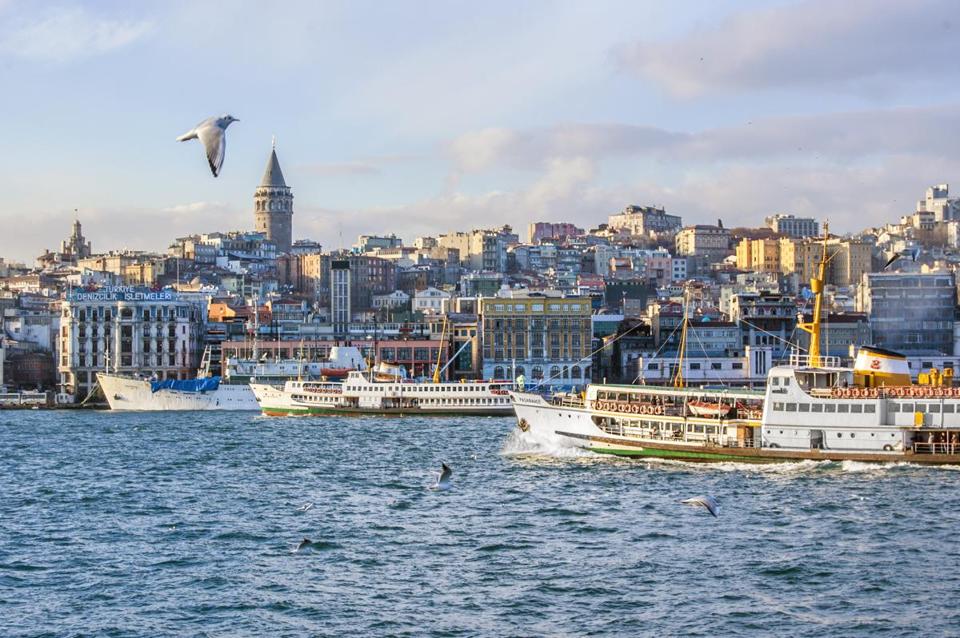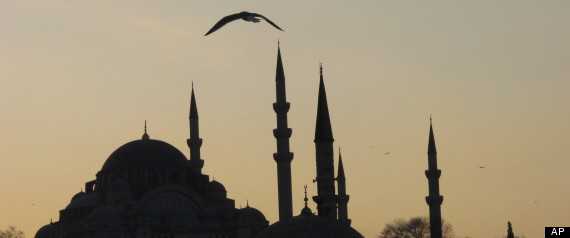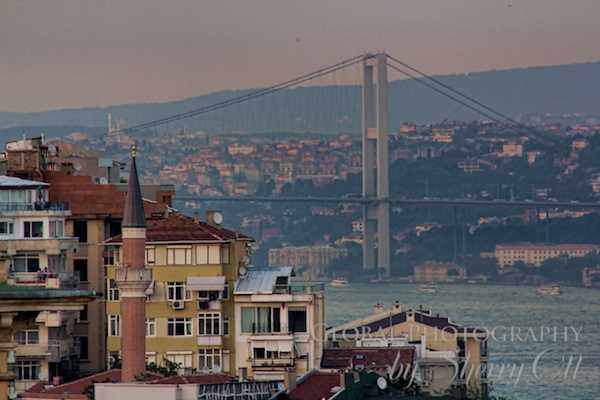After the surprise of Bulgaria (surprise in its freedom of camping, delicious food, quaint towns, and visible lack of cliché weightlifters) comes the anticipation of Turkey and Istanbul.
Through a windy, potholed drive averaging 40 clicks an hour we approach the Bulgarian/Turkish border. After some to-and-froing with a cop who thinks we’re trying to bribe him, or fear that cameras would perceive it so (as I have my wallet out trying to pay for a visa and the right automotive papers which I had to the cent, no more, no less), we give the obligatory ‘new country hi-five’ and drive into Turkey.
Oh what a delight. I don’t know if the Turkish highway system has a nickname but it should definitely be called the Otto-bahn. Roads a mile wide and smoother than a Cuba Libre at dusk welcome us to a country desperate to prove their worth to the European Union. If I were on its board of directors, and the board decided what countries were in the EU and what countries were out it’d be on the basis of salivory gland-draining food, smooth roads and general good vibin’ peeps and Turkey would have set the standard. I’d also like to point out that the Eurovision song contest (to which Turkey is a noteworthy competitor) has been around longer than the European Union, and that seniority should rule.
Point being, instantly the hillsides feel exactly as a Turkey should, part Mediterranean and part Middle Eastern, not that I’ve been to either regions until now but from what I understand of Sergio Leone films and ABC World News, nature gets pretty rugged in both parts.
After a week of free camping we deserve showers and have our campsite all worked out. However, as you might recall from Romania, our GPS, Heather II broke when we tried to upload fresh maps to it which would include Turkey, not originally included on our device. But of course the device ceased up and would no longer turn on. Thus, I am driving, and Liz is navigating into the very car unfriendly Istanbul with just a road atlas, its image shot from where the Hubble telescope is probably now, or maybe Google images – the Great Wall of China just out of view.
As we approach closer to the city we become obviously sceptical we’ll find it, mainly because the website directed us to Bakirkoy, but there are two different Bakirkoys. We pull over and I speak to a gentleman and his wife who point on the map to the Asian side of Istanbul (a whole other continent to where we are aiming for) and call the three dead numbers the campsite’s website give. Liz meanwhile, ever the flirt, has a posse of local boys about 6-10 years of age around the Bee, all giggling at her hot gringo/guido-ness and testing their English; ‘My name is…’ and ‘I love you’. I must say, they came off extremely desperate… that is until they said ‘Hiiiii Coliiiiiinnn, My name is….’
The day by now is about seven hours long and the hectic centre of the city is looming ever closer, fearful we aren’t going to find the site I pull into the Sheraton. The well-groomed concierge doesn’t see us coming. Us two stinking ferals roll out of the VW parked practically in their lobby with two questions: ‘How much for a room?’ and, depending on the first answer, ‘Where’s the nearest trailer park?’ With only an executive suite available it is beyond our budget but they lend us their lobby internet to find the camping which closed down three years ago but still have an active site. We find an alternative hotel in the Marriott Courtyard and to make sure Turkey will be as great as we expect it to be, I’m willing to splurge.
With only an executive suite available it is beyond our budget but they lend us their lobby internet to find the camping which closed down three years ago but still have an active site. We find an alternative hotel in the Marriott Courtyard and to make sure Turkey will be as great as we expect it to be, I’m willing to splurge.
On the map it seemed simple enough. Drive up that road, chuck a right. What could go wrong?
We head out to find the hotel however after an already exhausting day we are pretty quickly raising our voices, Liz re-iterating herself on directions and worthy turn-offs, while my frustration manifests into a Chinese burn on the stirring wheel more vigorous than the Tiannamen Square massacre.
To make matters worse, Asia sets into darkness and driving at night is not the Bee’s strong point. He has only enough power to use either the headlights OR the indicators, never both. Indicating our movements to fellow drivers involves waving one or the other’s arms out the window like a dyslexic semaphore-ist while triggering epileptics in a series of flicking headlights off, flicking indicator lights on (they flick themselves) long enough to get the point across and then flicking headlights back on.
Just as my headlights are using their powers for evil rather than good, I’m told by my dashboard lights that the engine is overheating. We pull over into the nearest service station and turn off the car before unloading everything that covers the engine in the back of the van; the two bikes, the bedding, the mattresses, the timber bed support, the stowed-away backpacks, the engine cover, all to look into an engine that to me looks like a puzzle trickier than Sudoku, Rubik’s cubes and those Magic Eye posters all put together.
I’m certain the engine, having reached the furthest it would from Amsterdam, has now sought to pack itself in. Servo attendees can’t help much but one chap reaches into the engine and by simply pressing and raising on a small metal leaver, far smaller than my accelerator pedal, raises the revs to a high pitched squeal that could deafen a werewolf. By nearly making the lil Bee blow up, and through no common language he somehow reassures us it was okay to drive. Honestly, it’s his stubby workman-like fingers, they’ve seen the inside of more engines than ours have seen qwerty pads so my faith is with him. We pile everything back in the back in the reverse order we dismantled it from and drive just the simple 1.4 km to our hotel. To tired to note the diametrics, nervousness, or self-consciousness we approached the Sheraton, we pull up, check in and pass out.





